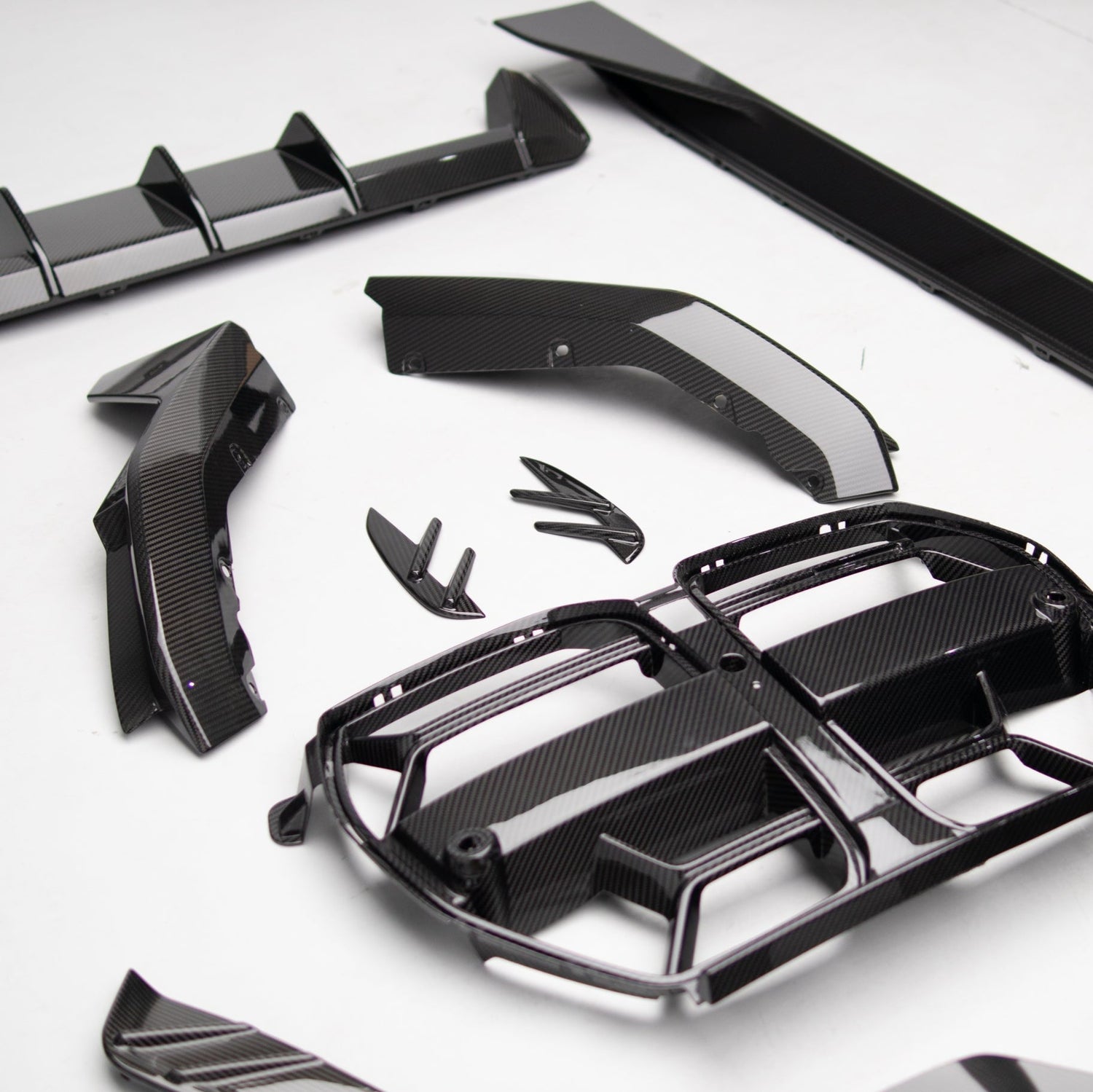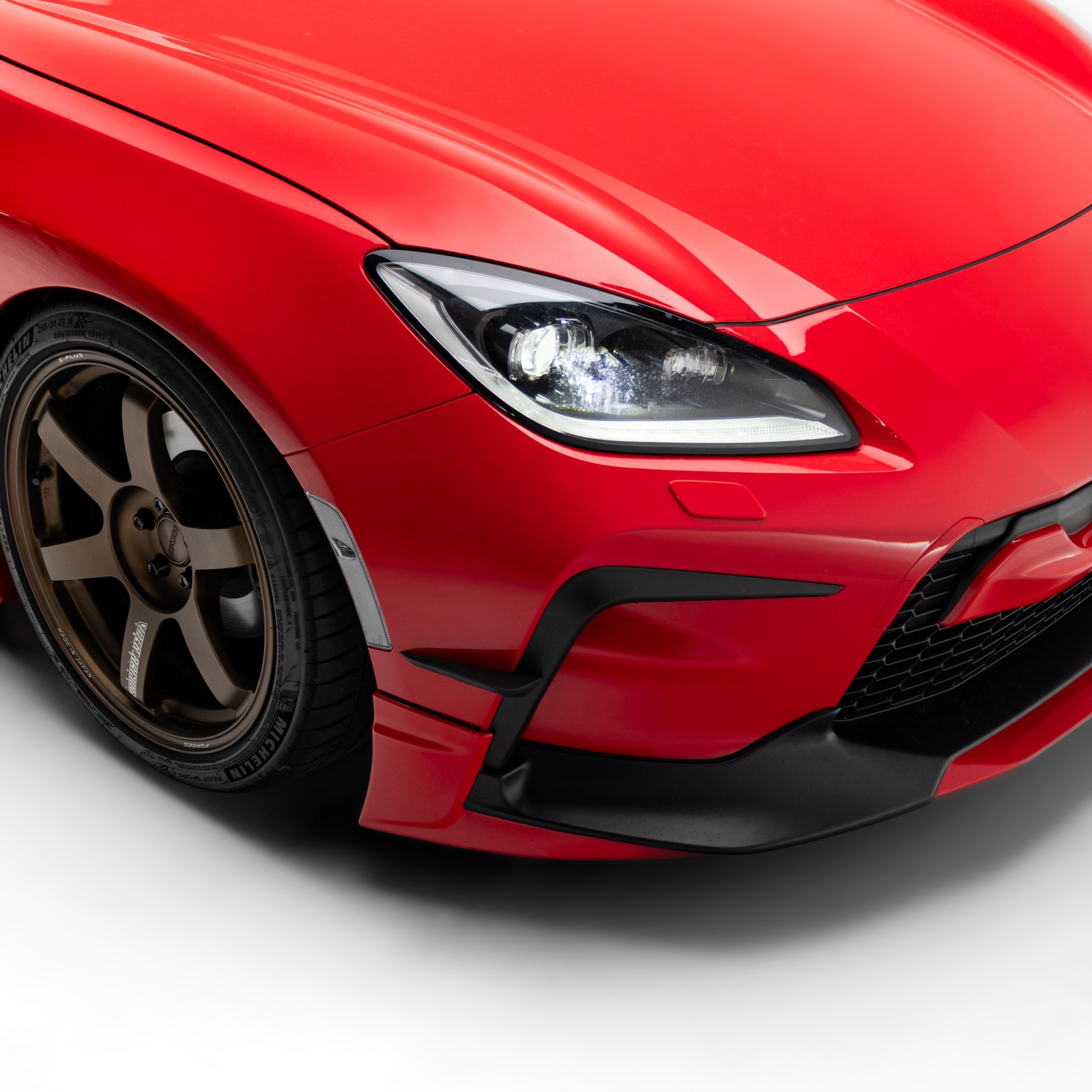Carbon fibre car parts can be manufactured in many different ways and not all are created equal. There are many misconceptions about Carbon Fibre and this article should give you a much better understanding of the differences between types of carbon fibre and distinguish which is most suitable for you
The term "Carbon Fibre" is widely used in the Automotive Industry and because they generally look very similar most people would overlook the manufacturing methods and assume that if the part is made from Carbon Fibre the part is lighter than its metal/plastic counterpart; this is not always the case.
There are differences in manufacturing techniques, the ingredients used, the structural design which together will effect the panel’s strength, weight, and inevitably their cost.
Carbon fibre can simply be simply divided into two categories. Wet Carbon and Dry Carbon.
Wet Carbon is manufactured by laying Carbon Fiber cloth and coating it in an epoxy resin before placing it into the mould. The resin and carbon cloth are vacuum-sealed to cure. The pressure of the vacuum forces the resin into the cloth and also surrounds the cloth. To provide structural support manufactures will commonly use plastic and fiberglass as an underlay. This method is cheap and effective, making it very popular for automotive applications.
Dry Carbon goes through a much more intricate manufacturing process. The carbon cloth used has the epoxy resin pre applied into the fibers. Dry Carbon is also referred as Pre-Preged Carbon, as the resin is pre-impregnated into the fiber. The pre-impregnated carbon is then placed into an autoclave where it is cured under high pressure and heat which fixes any irregularities and further strengthens the material. This process allows Dry Carbon to be much thinner and stronger than Wet Carbon.
Wet Carbon vs Dry Carbon (Pre Preg)
Advantages of Wet Carbon Fiber
- Much more affordable
- More 3D look due to thicker resin clear coat
Disadvantages of Wet Carbon Fiber
- Weaker and heavier than its dry counterpart
- Will fade unless properly maintained (ceramic coat / regular waxing can fix this problem)
Advantages of Dry Carbon Fiber
- Up to 60% Lighter as there is no excess resin
- Significantly stronger
- Neater Carbon Pattern
Disadvantages of Dry Carbon Fiber
- Almost four times as expensive to produce
Which one is more suitable for you? If you are after just the "carbon look" and are not too fussed about the weight of the part. Wet Carbon is definitely the one to go for. Dry Carbon is for those who are looking for the lightest weight possible.
We hope that this article has given you a better understanding of Carbon Fibre and will help you choose the most suitable parts for you and your car! At Zero Offset, we are commited to providing the highest quality in both Wet and Dry Carbon. If you still have some unanswered questions please contact us and our team will be happy to assist!



Leave a comment
This site is protected by hCaptcha and the hCaptcha Privacy Policy and Terms of Service apply.